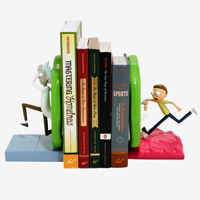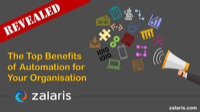 Scroll the menu to find all the places to visit
Scroll the menu to find all the places to visit© ThoughtAsylum.com 2024. All rights reserved.

20 Feb 2023
With a relatively recent update around views in the beta of Readwise’s Reader service beta, I am now getting deeper into its use and building it into my various workflows in an aim to help me better manage and process the various feeds of information I have coming in. The Reader service includes an option to accept input via e-mail for newsletters, etc. While I plan to set up a number of e-mail redirect rules in my personal Gmail account to push some newsletters into the service, I also have a backlog of newsletters I want to pick from and pass them to Reader.
I didn’t want to blanket forward sets at this point and drown my Reader feeds, so I decided I wanted to redirect on a per e-mail basis. Fortunately, I use Mailmate as my Mac e-mail client of choice, and I ended up scripting something I think provides an easy way of adding this sort of functionality for yourself.
Read More
18 Feb 2023
While Drafts is my ever present information capture app, Obsidian is the destination for a large amount of that information as I build the content into cross-referenced, meaningful notes. Much like Drafts, Obsidian has a framework through which people can develop plug in solutions (literally “plugins” - core and community), which in many ways mimics Drafts’ actions.
While some of my own work on Drafts actions has yielded libraries and reusable actions that others can build into workflows, the nature of some of the amazing plugins in Obsidian takes things further and uses plugins to open portals to allow you to interact directly with the underlying Obsidian API. As a result you can build some quite useful commands without having to build your own plugin.
In this post I am going to share the construction of some simple ‘path-based’ command examples to illustrate how you can take advantage of this.
Read More
12 Feb 2023
Last summer I created a Drafts action for a user to allow them to mark some text in IA writer’s Markdown syntax for a highlight. Now my solution was not the first solution offered, but it was a little different to the others, and I have been meaning to write it up for quite some time now to go into a bit more detail about how it works and the benefits it provides over other, existing solutions.
Read More
05 Feb 2023
A few days ago I published a post about a change to how I am managing my daily tasks in Obsidian. Within that post I included a bit about how I am pulling that task list through into my dashboard canvas, and this threw up a bit of interest on Mastodon with a few people asking how I had produced a timeline on my dashboard. While I provided a few pointers at the time, I promised to go through in more detail what I have in place, and that is what I will be doing in this post.
Read More
29 Jan 2023
My use of Obsidian as a personal knowledge management (PKM) tool sees me making extensive use of daily notes. Each day I work, I create a new note and use it to keep an activity journal of all the key things I have done, link out to notes for meetings I have attended, things I have learned, etc. I also display my key tasks (for today and a soon as possible) and record any of the key tasks I have completed that day.
I have always taken to cutting and pasting to transfer incomplete tasks to transfer them forward to the next daily note. But after having tried out Roam Research a few years ago and working with their task management approach, I have always felt that my method was inefficient; but as with many things Obsidian, I found a better way utilising a third-party plugin.
Read More
31 Dec 2022
Practically, since Apple made Shortcuts available on the Mac, Drafts has supported executing Drafts and processing the return. To do this, Drafts passes control to Shortcuts, bringing it to the foreground, and then switches back to Drafts at the end. This feels suspiciously like an x-callback-url call of a shortcut.
While x-callback-url is a very useful option, on the Mac, we have more options and control over how we interact with other automation applications, and in this post I’ll outline an alternative that allows you to run a shortcut in the background.
Read More
29 Dec 2022
Yesterday I posted some details around using Shortcuts to send a new note to Obsidian. Today, I’m going to look at a different and also popular capture option for Obsidian; using one of my favourite applications, Drafts.
Read More
28 Dec 2022
Something I have seen come up time and again is the use of Apple Shortcuts to create content inside of an Obsidian vault. Since it seems to be something that so frequently comes up, I thought I’d try my hand at explaining a couple of techniques that can be used, and what the pros and cons are around these methods.
Read More
28 Nov 2022
Computer systems have been managing data for us since their inception, and these days we have sophisticated systems that do so at an incredible rate and with accuracy far exceeding human standards. Many organisations stop at the out-of-the-box functionality of their systems, and make assumptions about what is and what is not possible. We are here to tell you that through the application of automation techniques even more is possible, and this is no less true for the domains of HR and payroll than for any other. In fact many HR and payroll processes are highly automatable.
The primary reason that HR and payroll departments do not explore this is because they do not full understand what investing in automation solution could deliver. In this article we are going to take at why it is worth exploring automation for HR and Payroll.
Read More
27 Nov 2022
I have been using Obsidian as my personal knowledge management app of choice now for a few years, and recently I have been modifying one of my note vaults to a new indexing system. However, I stumbled across an interesting search issue with the indexing that required a bit of investigation to resolve.
Read More